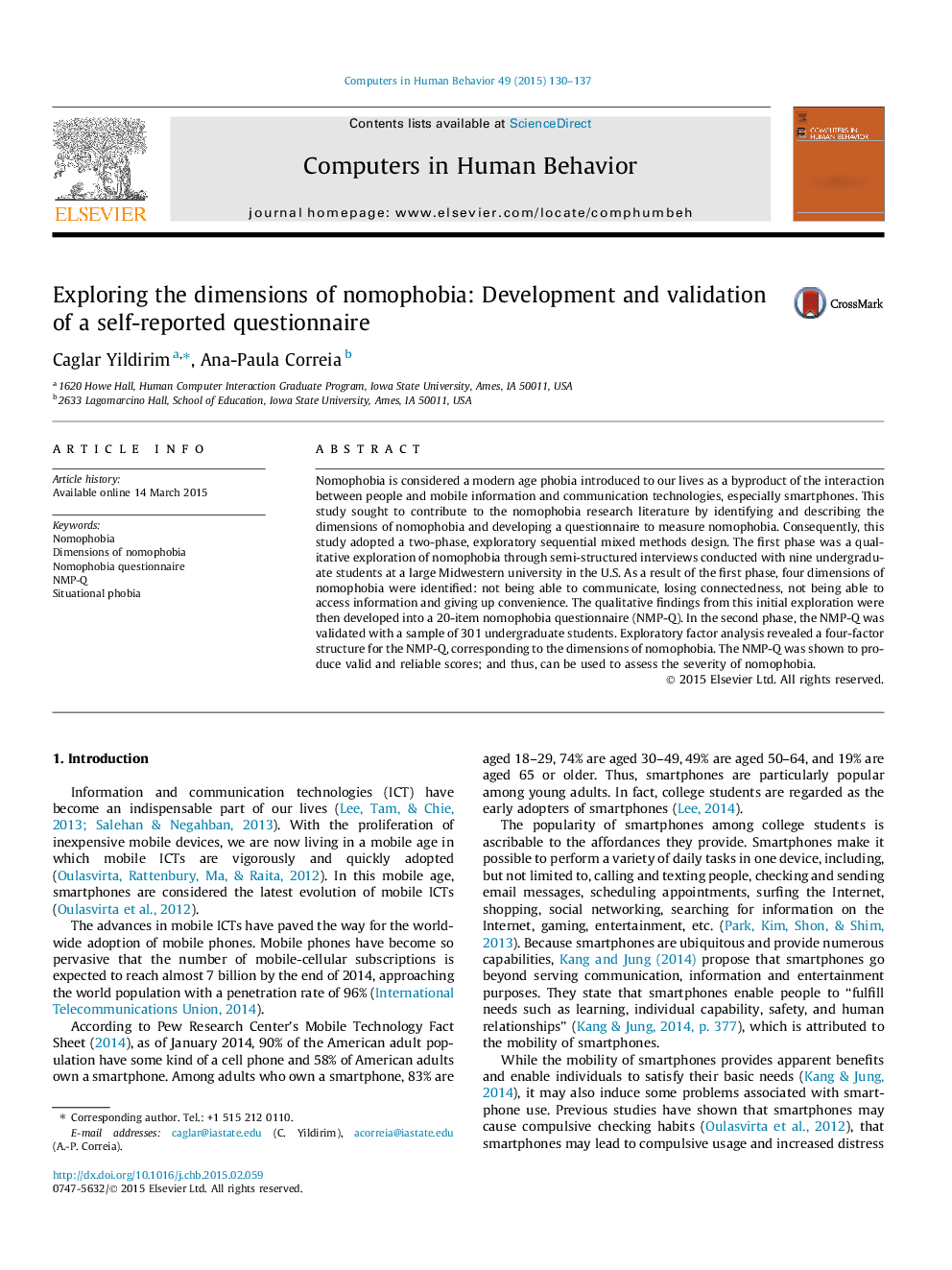| کد مقاله | کد نشریه | سال انتشار | مقاله انگلیسی | نسخه تمام متن |
|---|---|---|---|---|
| 350311 | 618442 | 2015 | 8 صفحه PDF | دانلود رایگان |
• Nomophobia was investigated as a theoretical construct among young adults.
• Dimensions of nomophobia were identified and described.
• The Nomophobia Questionnaire (NMP-Q) was devised and validated.
• The NMP-Q can be used as a measure of nomophobia.
• Nomophobia can be considered a situational phobia and included in DSM-5.
Nomophobia is considered a modern age phobia introduced to our lives as a byproduct of the interaction between people and mobile information and communication technologies, especially smartphones. This study sought to contribute to the nomophobia research literature by identifying and describing the dimensions of nomophobia and developing a questionnaire to measure nomophobia. Consequently, this study adopted a two-phase, exploratory sequential mixed methods design. The first phase was a qualitative exploration of nomophobia through semi-structured interviews conducted with nine undergraduate students at a large Midwestern university in the U.S. As a result of the first phase, four dimensions of nomophobia were identified: not being able to communicate, losing connectedness, not being able to access information and giving up convenience. The qualitative findings from this initial exploration were then developed into a 20-item nomophobia questionnaire (NMP-Q). In the second phase, the NMP-Q was validated with a sample of 301 undergraduate students. Exploratory factor analysis revealed a four-factor structure for the NMP-Q, corresponding to the dimensions of nomophobia. The NMP-Q was shown to produce valid and reliable scores; and thus, can be used to assess the severity of nomophobia.
Journal: Computers in Human Behavior - Volume 49, August 2015, Pages 130–137
